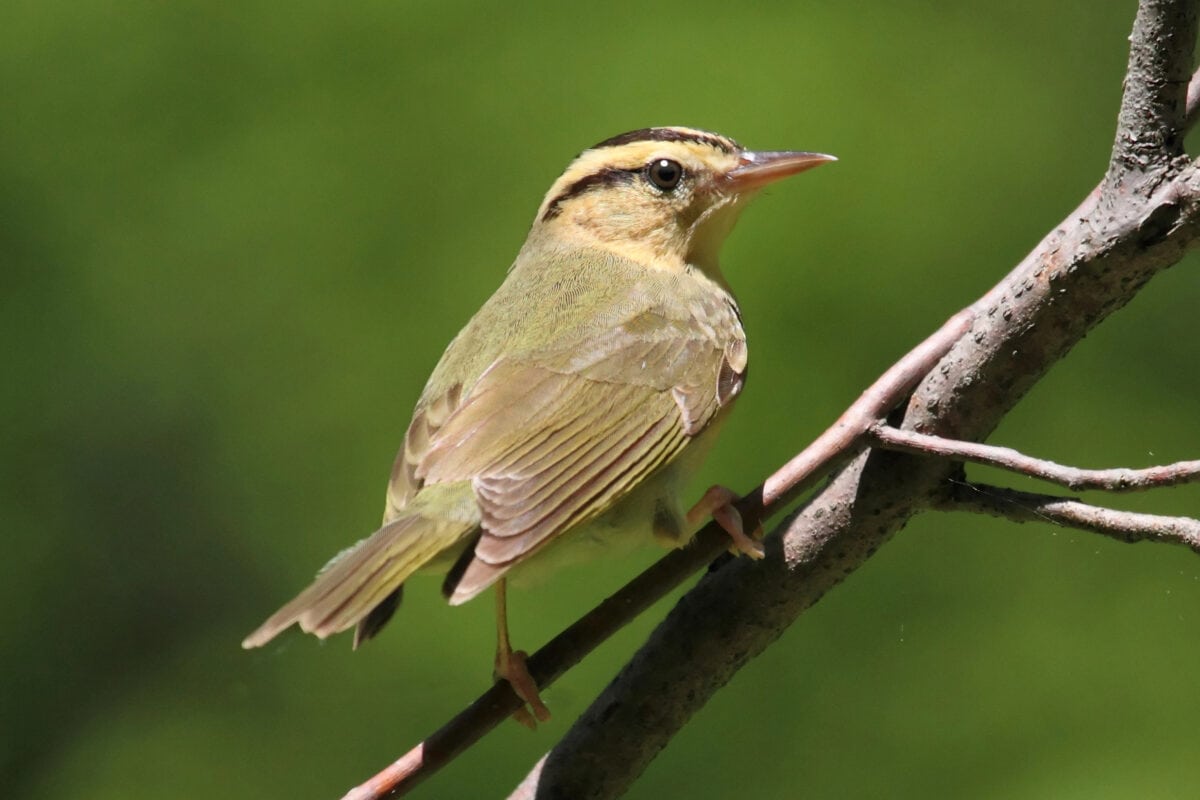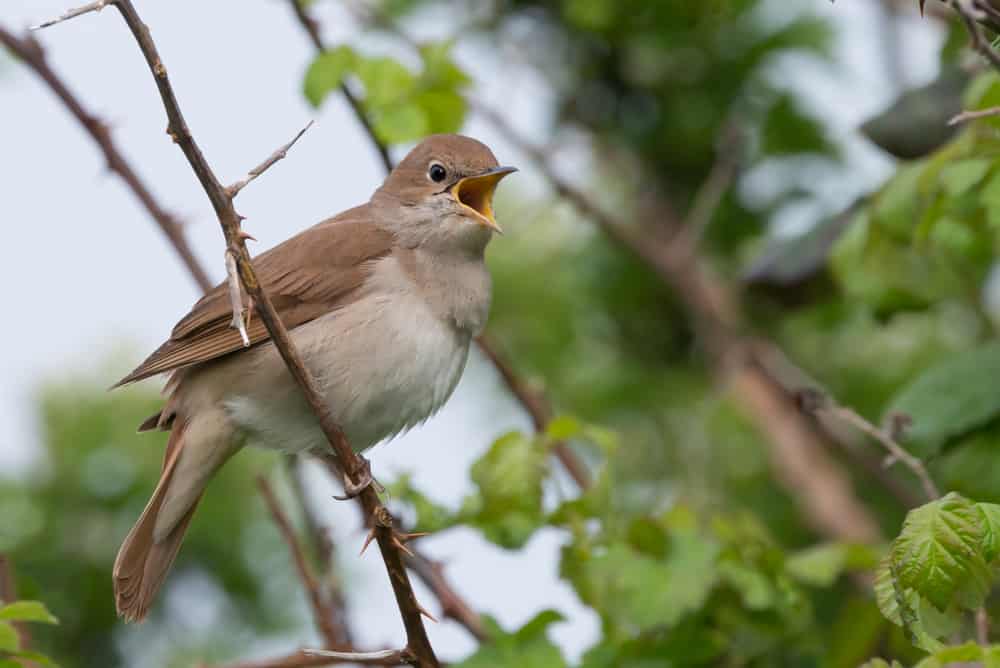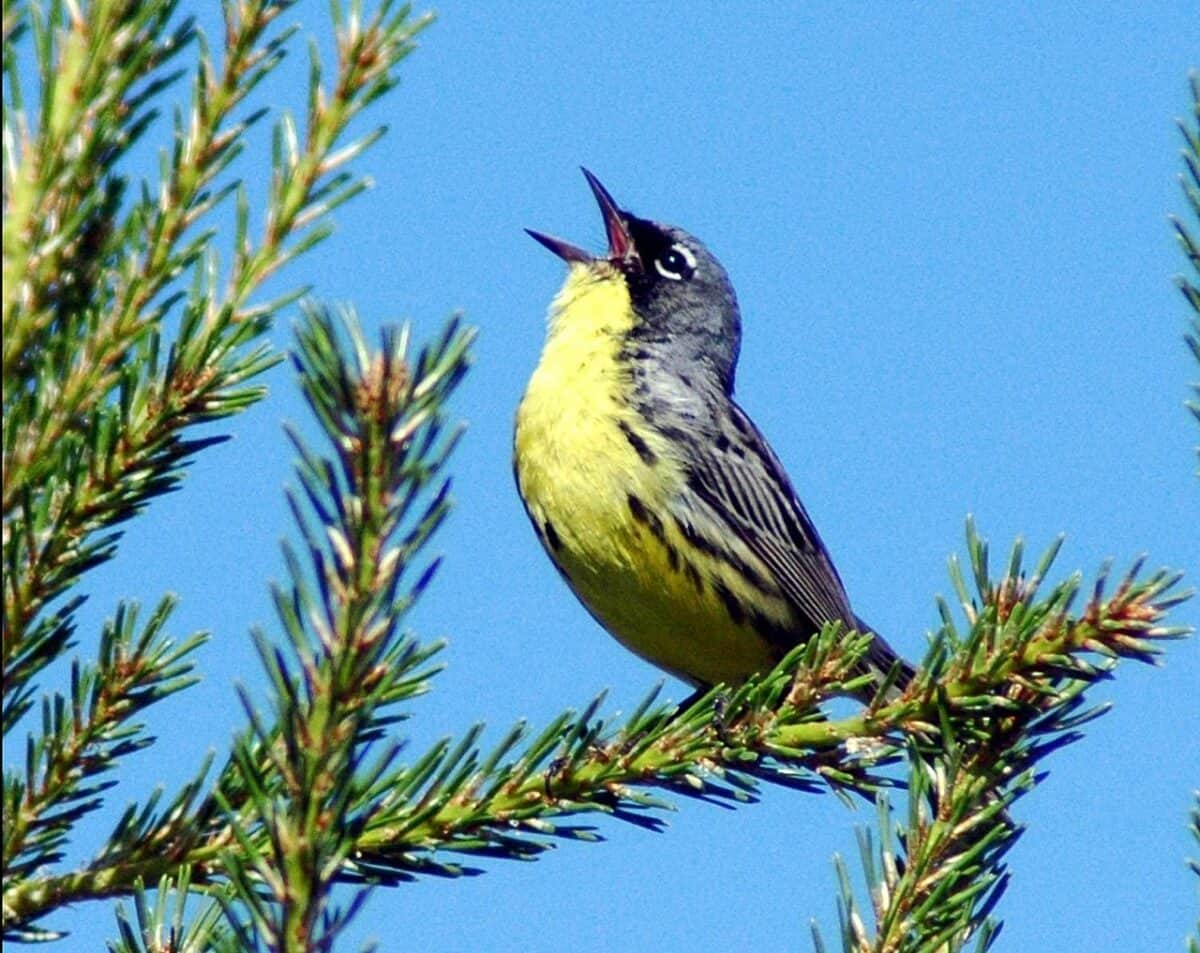Bird migration stands as one of nature’s most spectacular phenomena, with billions of birds embarking on journeys spanning thousands of miles each year. While ornithologists have made remarkable strides in understanding these seasonal movements, several migration patterns continue to baffle the scientific community. From inexplicable route changes to mysterious disappearances and reappearances, these avian journeys represent some of the most profound mysteries in modern biology. This article explores 13 perplexing bird migrations that continue to elude scientific explanation, showcasing how much we still have to learn about these remarkable creatures and their extraordinary navigational abilities.
The Trans-Pacific Marathon of the Bar-tailed Godwit

The Bar-tailed Godwit (Limosa lapponica) performs what might be the most physically demanding migration of any bird species. These shorebirds fly non-stop for more than 7,000 miles (11,000 kilometers) across the Pacific Ocean from Alaska to New Zealand without a single rest or refueling stop. A satellite-tagged female godwit named E7 once completed an 8-day, 7,145-mile (11,500-kilometer) flight, the longest continuous bird flight ever recorded. What mystifies scientists is how these relatively small birds, weighing just 1-1.5 pounds (454-680 grams), can sustain flight for over a week without food, water, or rest. Their ability to navigate across featureless ocean expanses with such precision remains largely unexplained. Even more puzzling, young godwits somehow know the exact route despite never having flown it before and having no adult guides for their first journey.
The Vanishing Arctic Terns

Arctic Terns (Sterna paradisaea) are celebrated for having the longest migration of any animal, traveling from pole to pole annually and covering approximately 44,000 miles (70,800 kilometers) each year. While their general migration route is known, scientists have documented bizarre disappearances of entire populations for weeks during their journey. During a 2015 tracking study, researchers lost signals from over 70% of tagged terns for nearly three weeks as they crossed a specific section of the Atlantic Ocean. When the signals resumed, the birds had somehow traveled thousands of miles. The cause of this “tracking blackout” remains unknown—whether it’s related to extreme weather patterns, magnetic anomalies affecting their navigation, or some unknown oceanic feature that causes them to alter their behavior. Even more mysteriously, different colonies experience these disappearances in different oceanic regions, suggesting a complex phenomenon that may vary geographically.
The Baffling Detours of European Bee-eaters

European Bee-eaters (Merops apiaster) typically migrate between Europe and sub-Saharan Africa along well-established routes. However, since 2010, tracking studies have revealed that some populations inexplicably take enormous, energy-costly detours of up to 1,000 miles (1,600 kilometers) during their journeys. What’s particularly perplexing is that these detours aren’t consistent with avoiding poor weather, predators, or seeking food sources. In some cases, birds have been documented flying in patterns resembling geometric shapes before resuming their expected course. Some scientists speculate these detours might represent ancient migration routes from evolutionary history that occasionally become activated by unknown triggers. Others suggest the birds may be responding to subtle geomagnetic anomalies undetectable to human instruments. The most puzzling aspect is that birds from the same breeding colony may take completely different routes, with some following the expected path and others taking these mysterious diversions.
The Kirtland’s Warbler’s Oceanic Mystery

The endangered Kirtland’s Warbler (Setophaga kirtlandii) breeds exclusively in young jack pine forests in Michigan and winters in the Bahamas. What confounds researchers is how these tiny songbirds, weighing less than half an ounce (14 grams), navigate the 1,500-mile (2,400-kilometer) journey across vast stretches of open ocean. Unlike many migratory birds that follow coastlines or island chains, tracking data shows some Kirtland’s Warblers fly directly across the western Atlantic, far from any landmark. More mysteriously, some individuals have been documented hovering in place over specific oceanic coordinates for up to several hours before continuing their journey, a behavior not typically seen in migrating passerines. These “hovering points” don’t correspond to any known oceanic features, weather patterns, or magnetic anomalies. Some researchers speculate they might be detecting subtle cues from deep ocean currents or Earth’s magnetic field that remain beyond our current measurement capabilities.
The Amur Falcon’s Inexplicable Navigation

The Amur Falcon (Falco amurensis) embarks on one of the most remarkable migrations in the bird world, traveling from breeding grounds in Siberia and northern China to wintering areas in southern Africa—a round trip of approximately 14,000 miles (22,500 kilometers). The truly perplexing aspect of their journey is the central leg: a non-stop flight of 2,500 miles (4,000 kilometers) across the Indian Ocean. What baffles scientists is that these falcons cross this vast ocean expanse with such precision that they consistently arrive at the same narrow corridor in East Africa each year, despite facing variable winds and weather patterns. Even more mysteriously, radar tracking has shown that different groups of falcons, separated by hundreds of miles during their ocean crossing, will suddenly converge and synchronize their flight paths at specific coordinates where no visible landmarks exist. How they coordinate this convergence without visual contact remains one of ornithology’s greatest puzzles.
The White-throated Needletail’s Disappearing Act

The White-throated Needletail (Hirundapus caudacutus), one of the world’s fastest birds in level flight, breeds in Siberia and winters in Australia, covering over 6,000 miles (9,700 kilometers) twice yearly. What perplexes researchers is a bizarre three-week gap in their migratory journey that occurs consistently each season. Satellite tracking shows these birds seemingly vanish from detection when crossing a specific region of the South China Sea. When they reappear, they’ve somehow traversed thousands of miles. In 2017, a international research initiative attempted to solve this mystery by deploying advanced tracking devices on 18 needletails. Remarkably, all tracking devices failed during the same geographic section of the migration. What makes this particularly strange is that the tracking technology continues to function perfectly on other similar-sized bird species crossing the same region. Some scientists speculate the birds may be entering an extreme high-altitude flight phase beyond the range of tracking capabilities, while others suggest they may be temporarily grounding in remote locations with characteristics that interfere with satellite connections.
The Inexplicable Detours of Eurasian Woodcock

The Eurasian Woodcock (Scolopax rusticola) typically follows straightforward migration routes between northern Europe and the Mediterranean region. However, tracking studies initiated in 2013 revealed that some individuals make bewildering detours of up to 1,800 miles (2,900 kilometers) during their journey, nearly doubling their migration distance. What particularly confuses ornithologists is that these detours don’t correspond to weather patterns, food availability, or any other ecological variables scientists can identify. More puzzlingly, woodcocks from the same breeding population may split into different migration strategies, with some taking direct routes and others making these enormous detours—yet both groups arrive at their wintering grounds within days of each other. A 2018 study revealed another layer to the mystery: birds taking the longer routes actually maintained better body condition than their counterparts following direct paths, suggesting there may be some unknown benefit to these seemingly inefficient journeys that researchers haven’t yet identified.
The Red Knot’s Sixth Sense

The Red Knot (Calidris canutus) undertakes one of the longest migrations of any shorebird, traveling from the Arctic to the southern tips of South America, Africa, and Australia—distances exceeding 9,000 miles (14,500 kilometers). What scientists find most perplexing is these birds’ uncanny ability to time their arrival at specific refueling sites with the precise moment of seasonal resource abundance. For example, Red Knots arrive at Delaware Bay exactly when horseshoe crabs begin spawning, a critical food resource. Researchers have discovered that some populations of Red Knots begin adjusting their migration timing while still thousands of miles away from these sites, seemingly able to predict optimal arrival times despite being unable to directly detect the environmental conditions at their destination. More mysteriously, tagged Red Knots have been documented making unexpected mid-journey course corrections that perfectly compensate for weather events that haven’t yet occurred at their destination. This apparent anticipatory navigation suggests sensory abilities that remain completely unexplained by current science.
The Great Reed Warbler’s Midair Pauses

The Great Reed Warbler (Acrocephalus arundinaceus) migrates between Europe and sub-Saharan Africa, covering approximately 5,000 miles (8,000 kilometers) each way. What has recently confounded researchers is the discovery that these birds periodically enter a state of “suspended migration” where they hover in place for up to 12 hours at specific geographic coordinates that don’t correspond to any known rest stops or feeding grounds. These hovering events typically occur over featureless terrain like deserts or open ocean where no resources are available. Even more curiously, these pauses tend to happen at the same coordinates year after year, sometimes with multiple birds from different populations converging at these mysterious points. The behavior defies conventional understanding of energy conservation during migration, as hovering requires significant energy expenditure. Some researchers hypothesize these locations might have special geomagnetic properties that help the birds recalibrate their navigational systems, similar to how humans might stop to check a compass, but no conclusive evidence supports this theory yet.
The Fork-tailed Swift’s Aerial Enigma

The Fork-tailed Swift (Apus pacificus) is remarkable for potentially spending up to 10 months of the year continuously airborne, without ever landing. These birds migrate between Siberia and Australia, covering approximately 8,000 miles (12,900 kilometers) each way. The truly baffling aspect of their migration is that radar tracking indicates some individuals fly in complex, spiraling patterns during specific portions of their journey, covering three to four times the distance necessary between two points. These spiral patterns often span hundreds of miles in diameter and can add thousands of miles to their journey. Even more mysteriously, these patterns often occur in regions of apparently stable, favorable flying conditions where direct flight would be more energy-efficient. Some researchers have suggested they might be exploiting complex atmospheric phenomena invisible to our detection equipment, while others hypothesize they could be mapping Earth’s magnetic field in three dimensions. However, both explanations remain speculative, and the true purpose of these elaborate flight patterns continues to elude scientific understanding.
The Eastern Curlew’s Lunar Connection

The Eastern Curlew (Numenius madagascariensis), the largest migratory shorebird, travels between breeding grounds in Russia and wintering sites in Australia, a journey of approximately 7,000 miles (11,300 kilometers). What mystifies researchers is the strong correlation between these birds’ departure dates and specific lunar phases, with mass departures consistently occurring within 48 hours of the full moon. The puzzle deepened when scientists discovered that this lunar synchronization only occurs during the southern migration (northward to breeding grounds) but not during the northern migration (southward to wintering grounds). Even more perplexingly, if cloudy conditions obscure the full moon, departures still occur at precisely the same time as if the moon were visible. This suggests the birds might be responding to gravitational or tidal forces rather than visual cues. Adding another layer to the mystery, tracking data shows that during full moon periods, the curlews often fly at unusually high altitudes—sometimes exceeding 20,000 feet (6,100 meters)—a behavior not observed during other portions of their migration.
The Eleonora’s Falcon’s Transoceanic Puzzle

Eleonora’s Falcons (Falco eleonorae) undertake a remarkable migration between the Mediterranean region and Madagascar, traveling approximately 5,600 miles (9,000 kilometers) each way. What continues to baffle scientists is how these birds navigate across the Indian Ocean portion of their journey with such precision that they consistently make landfall within the same narrow 30-mile (48-kilometer) stretch of the Madagascar coast, despite departing from breeding colonies spread across thousands of miles from Spain to Cyprus. More mysteriously, tracking studies have shown that during oceanic crossings, groups of falcons from different breeding colonies somehow synchronize their movements despite having no visual contact with each other. Researchers have documented multiple instances where birds separated by over 100 miles (160 kilometers) simultaneously change course or altitude in identical patterns. This suggests some form of long-distance communication or shared sensitivity to navigational cues that remains completely unexplained. The precision of their Madagascar landfall is particularly puzzling considering the absence of landmarks and the shifting ocean currents and wind patterns they encounter during the journey.
The Secrets of Bird Migration Challenges and Future Research

The mysterious migrations detailed in this article represent some of the most profound puzzles in modern ornithology. Despite technological advances in tracking technology, genetic analysis, and computational modeling, scientists still struggle to fully explain how birds navigate with such precision across vast distances. The challenges in understanding these migrations are multifaceted, involving questions about sensory perception, energy metabolism, evolutionary history, and environmental adaptation. Future research directions are likely to focus on better understanding how birds perceive Earth’s magnetic field, potentially through quantum processes in their visual systems that remain poorly understood. Emerging evidence suggests some species may even detect subtle atmospheric infrasound or olfactory cues that travel thousands of miles. As climate change alters traditional migration patterns, unraveling these mysteries becomes increasingly urgent for conservation efforts. The continuing enigma of bird migration serves as a humbling reminder that despite our technological sophistication, nature still harbors secrets that elude our full comprehension.
Conclusion:

The extraordinary and still largely inexplicable migrations of birds underscore just how much remains to be discovered about the natural world. From the awe-inspiring nonstop flight of the Bar-tailed Godwit to the synchronized ocean crossings of Eleonora’s Falcons and the lunar-timed journeys of Eastern Curlews, each species profiled in this article challenges conventional scientific understanding. These mysteries point to the possibility of sensory capabilities and navigational systems far beyond what humans can currently detect or explain. As we advance our tools and methods, future research must embrace an interdisciplinary approach—bridging physics, biology, climatology, and even quantum science—to unlock the secrets these birds carry across the skies. Until then, bird migration remains not just a biological phenomenon, but a profound testament to nature’s complexity and resilience, urging us to observe, preserve, and continue to question.
- 10 Animals That Use Camouflage Best - August 17, 2025
- 13 Wild Birds That Use Tools to Hunt - August 17, 2025
- 9 Smartest Animal Species in North America—And Why They’re So Clever - August 17, 2025

